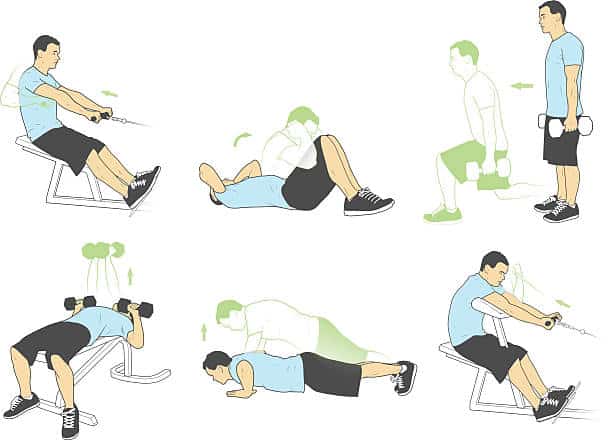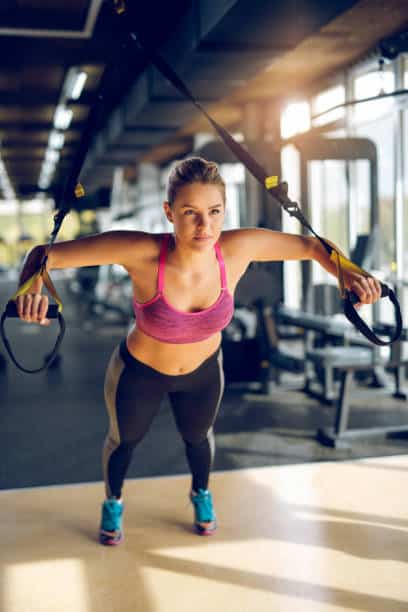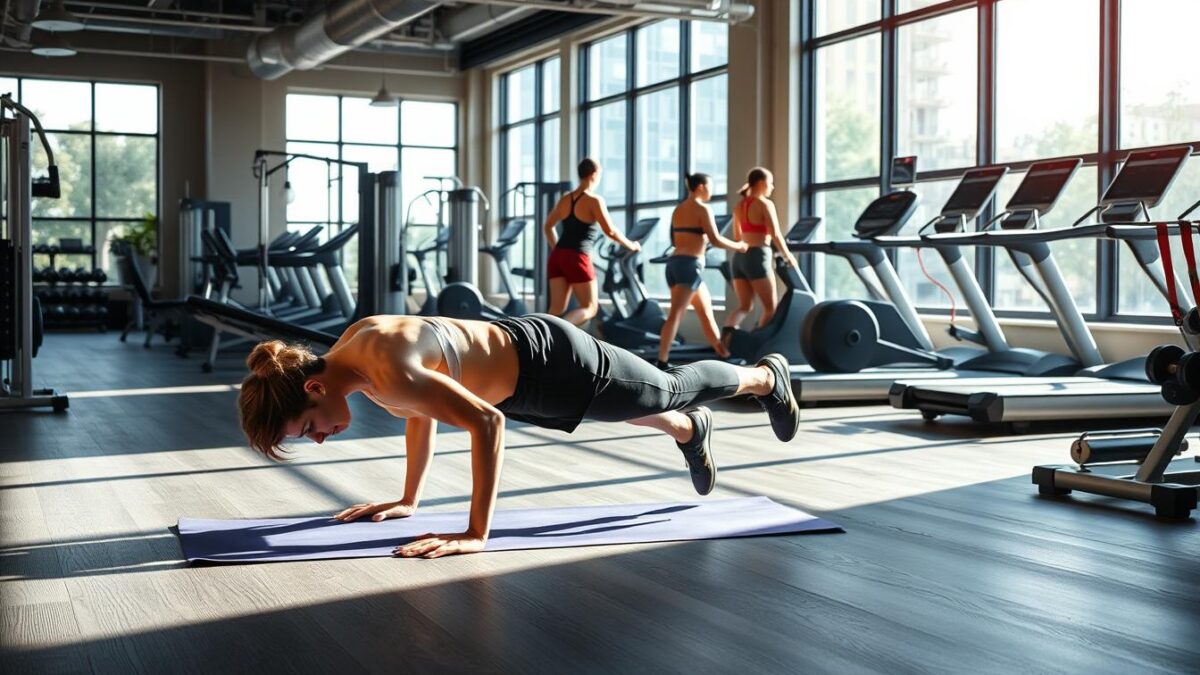
Boost Strength with Top Vertical Pull Exercises
Did you know that vertical pull exercises can activate up to 80% of your upper body muscles? Research published in the Journal of Strength and Conditioning shows that these workouts are incredibly effective at targeting the latissimus dorsi, biceps, and posterior deltoids.
If you’re looking to enhance upper body strength and develop your back muscles, adding vertical pull exercises to your routine can be transformative. The American Council on Exercise (ACE) notes that these exercises not only improve posture but also help maintain muscle balance.
Moreover, rehabilitation experts emphasize that vertical pull workouts are crucial for preventing injuries and aiding in shoulder and upper back recovery. Whether you’re aiming to boost muscular endurance or overall strength, incorporating these exercises is essential for reaching your fitness goals.
Why Vertical Pull Exercises are Essential for Upper Body Strength

Vertical pull exercises are vital for developing upper body strength. These compound movements engage multiple joints and muscles, making them key components of any effective back workout. They play a significant role in muscle hypertrophy, which means they help your muscles grow larger and stronger.
Strength coaches highlight the value of vertical pulls for achieving muscle hypertrophy and boosting metabolic rates. These exercises are ideal for enhancing functional strength—the kind you need for everyday tasks and sports performance.
A sports medicine journal notes that vertical pull exercises are particularly effective for improving upper-body muscle endurance. Regularly incorporating these exercises into your routine ensures that you can sustain your performance over long periods, whether you’re training at the gym or participating in sports.
Athletes and fitness enthusiasts frequently report how vertical pulls have enhanced their sports performance. By adding these exercises to your regimen, you, too, can see notable improvements in both functional strength and endurance.
| Benefits of Vertical Pull Exercises | Description |
|---|---|
| Muscle Hypertrophy | Increases muscle size and strength, supporting overall muscle growth. |
| Functional Strength | Enhances your ability to perform everyday tasks and athletic activities. |
| Compound Movements | Engages multiple joints and muscles, ensuring a well-rounded workout. |
| Back Workout Essentials | Key exercises to include in your routine for a strong and healthy back. |
Common Mistakes to Avoid During Vertical Pull Exercises
To get the most out of vertical pull workouts, you must master the appropriate technique. Errors might potentially result in injuries in addition to decreasing the effectiveness of exercise. The following are some typical traps to be aware of:
Using Incorrect Form
One of the main problems that people have when performing vertical pull workouts is incorrect form. You run the danger of getting hurt and losing effectiveness when you don’t use the right exercise form. The physiotherapist’s guidance suggests that keeping your spine neutral and using your core might help lower these risks considerably.
Neglecting Warm-ups
Many people jump right into workouts without warming up properly, which can result in injuries and strained muscles. Your muscles and joints are primed for the strain of vertical pulling motions with a warm-up. Sports experts advise dynamic stretches specific to these exercises. The safety and efficacy of your workout may suffer if you skip this phase.
| Importance | Benefit | Common Issue |
|---|---|---|
| Proper Exercise Technique | Improved Exercise Efficiency | Injury Risk |
| Warm-ups | Injury Prevention | Muscle Strains |
Top 5 Vertical Pull Exercises You Should Try

These top vertical pull exercises can help you strengthen your upper body. You can attain a well-rounded workout by focusing on different muscle groups and reaping the advantages of each exercise separately.
Pulldowns
When it comes to working the latissimus dorsi, pulldowns are great. To target different parts of your lats, experiment with different lat pulldown variations, including the wide-grip, close-grip, and reverse-grip. By changing the way one grips and places one’s hands, one can improve general back development and increase muscle diversity.
Chin-Ups
Chin-ups are a type of bodyweight exercise that works the upper back and biceps. Increasing grip strength and muscle endurance is one of the key advantages of chin-ups. They should be a mainstay of any upper body training program because they are great for developing core stability.
Pull-Ups
Another effective bodyweight exercise that emphasizes the lat muscles and works the upper back and shoulders is the pull-up. Participate in different pull-up progressions, beginning with assisted pull-ups and working your way up to unassisted versions to make pull-ups accessible to all fitness levels. They act as a standard for strength in the upper body.
Single-Arm Lat Pulldowns
Unilateral back workouts, such as single-arm lat pulldowns, are useful for treating muscular imbalances. They provide balanced muscle growth by supporting the independent strengthening of each side of your back. These are ideal for strengthening each person independently and addressing asymmetries.
Neutral Grip Pull-Ups
Pull-ups with a neutral grip are an excellent technique to activate the mid-back. This version increases grip strength and muscle activation while putting less strain on the wrists and shoulders. Neutral grip pull-ups assist prevent overuse problems in the shoulders and add variety to your upper body training plan.
The Benefits of Adding Resistance Bands to Your Vertical Pull Exercises

Exercises using vertical pulls with resistance bands can yield a number of advantages that will increase the efficiency and enjoyment of your training. Let’s examine how these straightforward but effective tools might improve your exercise routine.
Increased Resistance
Gradual overload is introduced by resistance band training, which is essential for developing strength. Bands provide your muscles a constant challenge by offering varying resistance that gets stronger as you stretch them. By ensuring that you are consistently pushing yourself, this strategy will help you acquire greater strength over time.
Versatility
Resistance banbands’aptability is one of their best qualities. They can be applied to adapt exercises to various goals and degrees of fitness. Whatever your level of experience, flexible band exercises can help you reach your objectives. Just cutting or stretching the band or utilizing bands with varying resistance levels will change the intensity.
Enhanced Muscle Activation
Researchers have discovered that incorporating resistance bands into your workouts can significantly enhance muscle activation compared to traditional bodyweight exercises. Adding bands to your vertical pull exercises helps engage more muscle fibers, leading to a more effective workout overall. A study published in the Journal of Strength and Conditioning Research confirms that muscle activation levels rise notably with the use of resistance bands.
Personal trainers often recommend using resistance bands in creative ways to target various muscle groups and amplify the effectiveness of your vertical pull exercises. Integrating these bands into your routine not only increases muscle engagement but also adds variety, keeping your workouts fresh and engaging.
| Benefits | How Resistance Bands Help |
|---|---|
| Increased Resistance | Progressive overload for consistent strength gains |
| Versatility | Adaptable to various fitness levels and goals |
| Enhanced Muscle Activation | Higher muscle engagement for effective workouts |
Integrating Vertical Pull Exercises Into Your Workout Routine
Integrating vertical pull exercises into your workout routine can significantly improve your overall fitness balance. According to certified fitness trainer Anna Swisher, incorporating vertical pulls into your weekly workout schedule is crucial. She advises structuring your workouts to include these exercises in a strategically balanced manner throughout the week.
When planning your exercise sequence, prioritize optimal performance by starting with compound movements like pull-ups. An article in a sports performance journal highlights that beginning with these demanding exercises ensures you’re getting your freshest energy for the toughest tasks, leading to better results.
It’s essential to maintain a proper pull-to-push ratio to avoid muscle imbalances. Biomechanics expert Robert Newton emphasizes that such imbalances can lead to injuries and decreased performance. To prevent this, make sure to balance your routine with an equal focus on both pull and push exercises.
| Day | Exercise | Type | Reps | Sets |
|---|---|---|---|---|
| Monday | Pull-Ups | Vertical Pull | 8-12 | 3 |
| Wednesday | Push-Ups | Horizontal Push | 10-15 | 3 |
| Friday | Chin-Ups | Vertical Pull | 8-12 | 3 |
| Sunday | Dips | Vertical Push | 10-15 | 3 |
Tracking Your Progress with Vertical Pull Exercises
When it comes to tracking your progress with vertical pull exercises, keeping a close eye on performance metrics can significantly boost your results. Monitoring key indicators like the number of reps, the weight you lift, and the consistency of your form provides a clear picture of your strength gains. Utilizing a fitness app can simplify this process by offering easy tracking and valuable insights into your performance.
Setting specific and realistic goals is also crucial. Without defined targets, maintaining motivation can be tough. By establishing clear, achievable goals, you give yourself something concrete to work towards. Keeping a workout log to document these goals helps you stay organized and provides a visual record of your progress, which can enhance your confidence as you see your improvements over time.
As you progress, it’s necessary to have strength benchmarks for which to aim. For example, set incremental goals to increase the number of pull-ups you can perform or to add more resistance to your single-arm lat pulldowns. Working with an athletic coach can provide structured milestones and keep your journey focused and attainable.
Beyond the physical benefits, tracking your progress also offers psychological advantages. Research indicates that documenting your achievements helps with long-term fitness adherence. Celebrating these small victories can keep you motivated and committed to your fitness goals. By integrating these strategies into your routine, you you’ll see that tracking progress becomes not just practical but also a rewarding part of your fitness journey.



